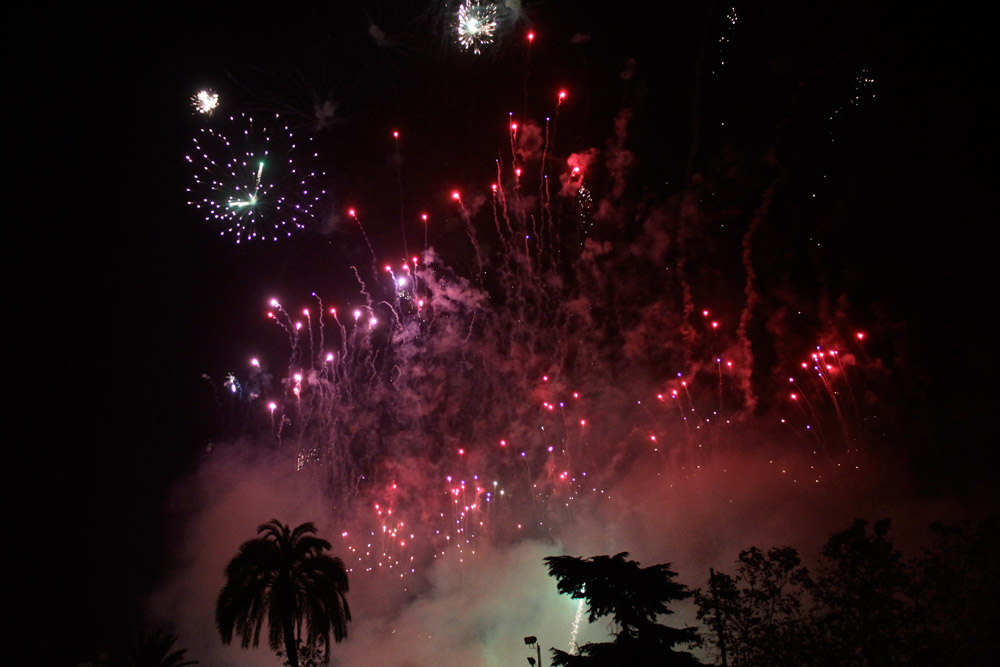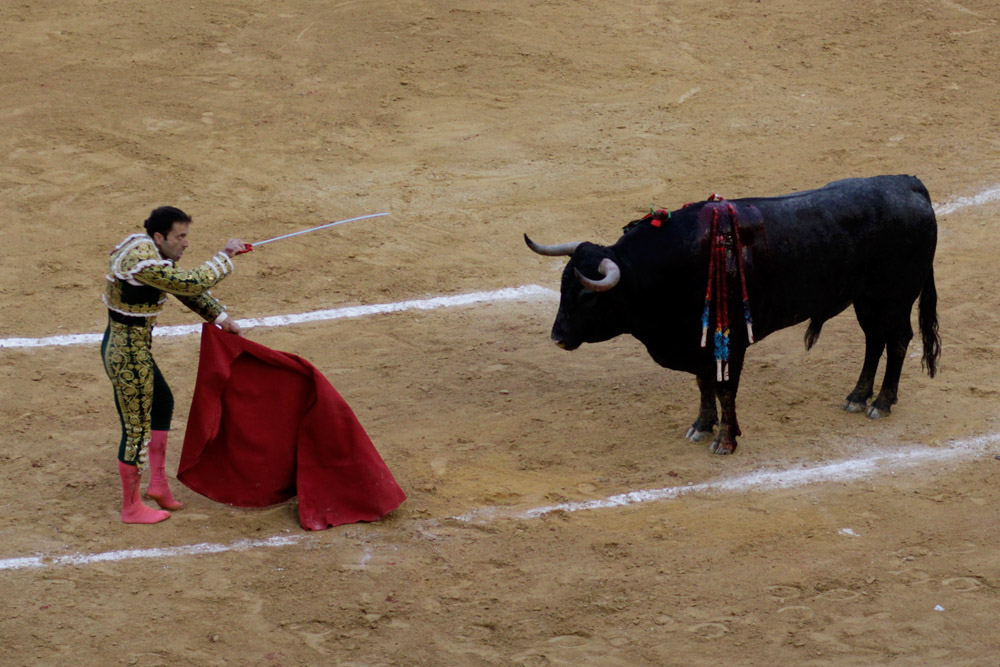I have kept close to Jerez de los Caballeros for the past couple of months, and that’s been great. I’ve met a ton of people, had really fun weekend adventures and felt like a part of the town. However, when my mom visited last week, I felt the need to explore.
First we went to Fallas in Valencia – This is a huge festival where the neighborhoods of Valencia build cartoon structures out of paper-mâché that are satirical in nature and huge in scale. They build a majority of these over one night and then have them up for a couple of days. On the last night, they burn them.
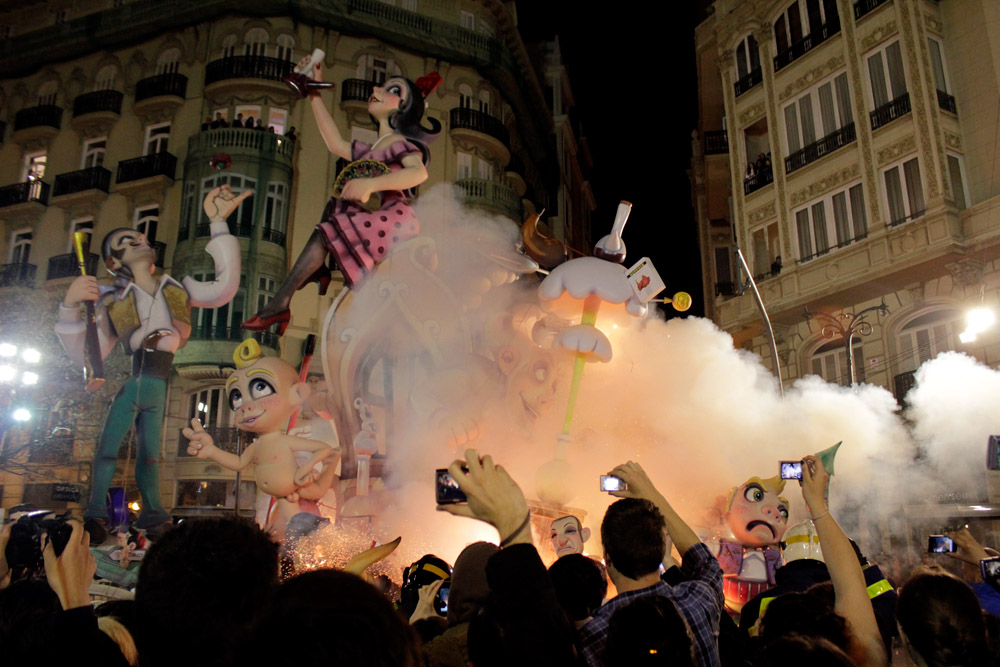
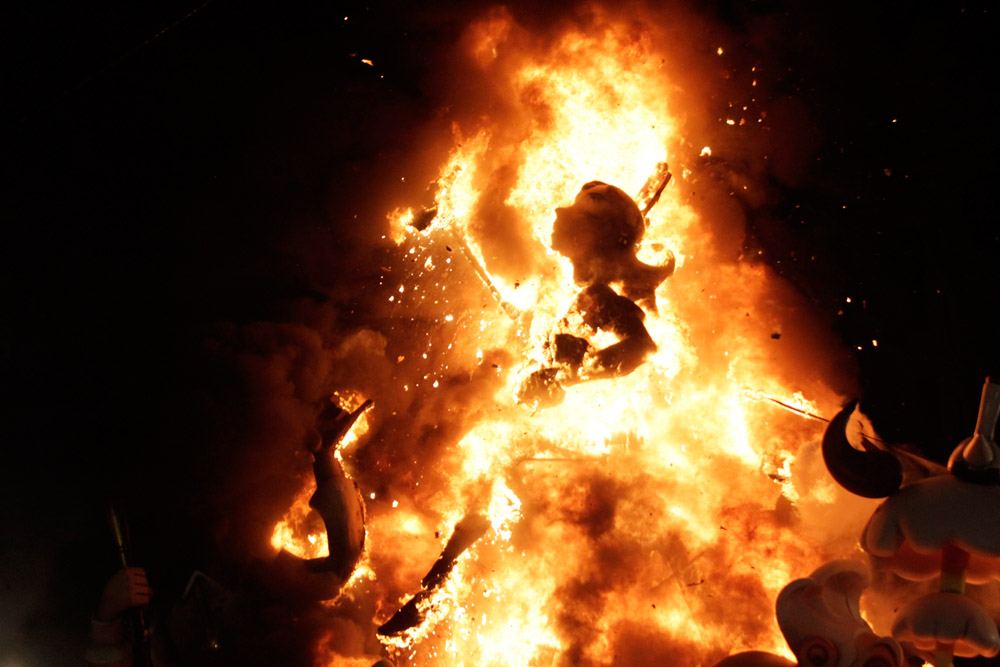
We watched a couple of the burning structures and were close enough to feel the radiating heat.
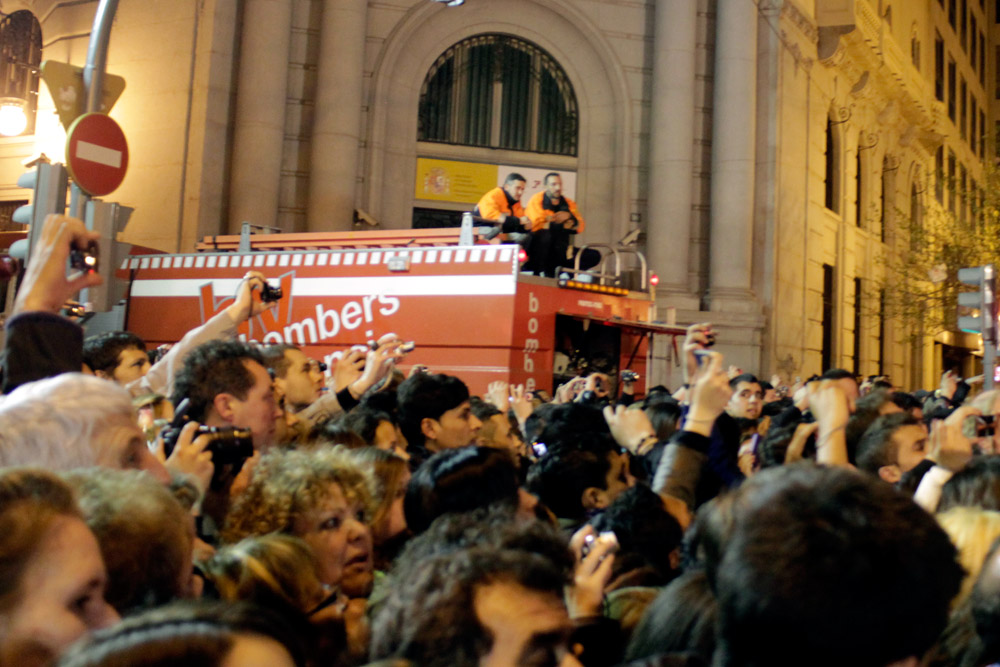
The crowds made us feel like we would be smooshed to death, but we lived to see another day.
Good thing too. On the second day, there were fewer people and I could get a better feel for the city of Valencia.
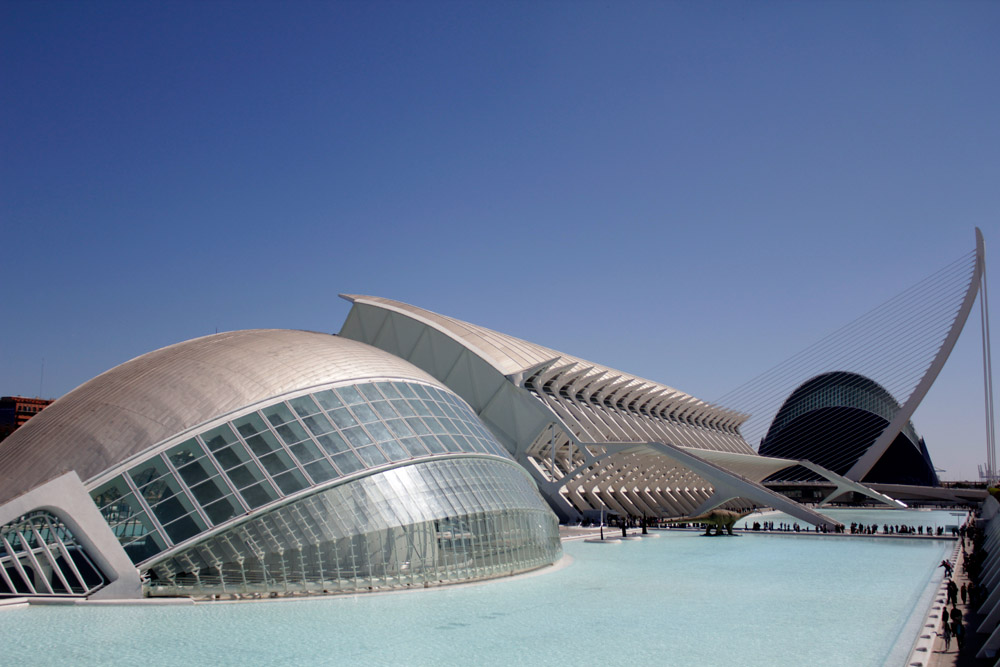
At first we walked around the new area of Valencia, the city of arts and sciences, which is made up of beautiful architectural structures with a shallow pool of water dividing the different museums. The structures take up the old riverbed of the Turia. After our walk, we were relieved to get a table in the main square for some paella and some cañas in the Spanish sun as we killed time until the bullfight.
The bullfight was the first of the season in Valencia. We took our places in the stands and the action began. I had never seen one before and figured I would have to see one before I form my opinion on the practice.
Watch the second bullfighter Tomás Sánchez in action (2:16).
The strategy: Three bullfighters. Six bulls. First multiple toreros (bullfighters) surround the bull with pink capes and get the bull to run around the ring and into the capes. Then a man on horse, a picador (lancer) uses a sharp rod to poke the back of the bull to start the bleeding. The horse is blindfolded. Then the banderillero (bullfighters on foot) put wooden colorful, sharp sticks in the back of the bull. This is to let out blood and to weaken the bull.
Then the matador (star bullfighter) performs. He uses the same pink cape and has the bull go around. Once the bull has let out blood and energy by going around the cape, the bullfighter then uses the red cape and a sword.
When he is ready, he sticks a sword in the bull’s back. If the bullfighter is good, the sword will go all the way in. The first bullfighter we saw had less skill, or worse luck than the others, and could not kill the bull even with three swords in. It was sad to watch as other toreros took over with knives to kill the bull.
Then we saw a more mature bullfighter who had created an art of movement and relationship with the bull, and it was much more interesting. He walked a fine line between taunting and respecting the bull. I could not believe how the matadors would turn their backs and walk away from the bull, to the applause from the audience. Then, back to the action.
The last bull to come out had incredible energy and power.
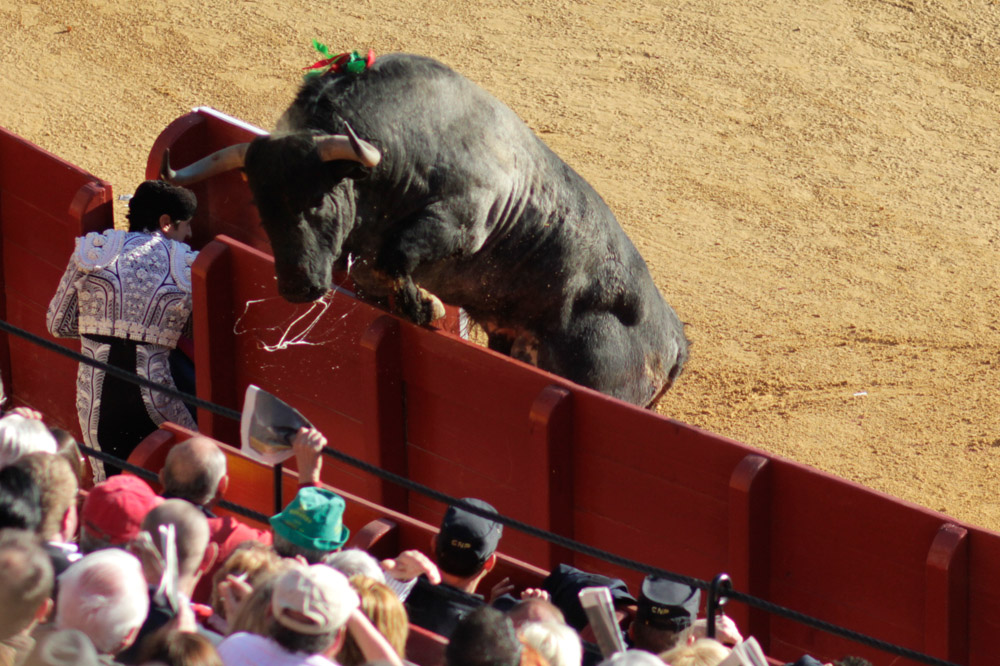
He jumped over the first ring, ran around the inner ring of the bullring, then entered again. His horns stuck straight up, which the man sitting next to noted and loved. A young bullfighter took him on and stayed very close to the bull the entire time. He was eventually put on his back by the bull, and left with a 10 cm gouge in his leg from the bull’s horn.
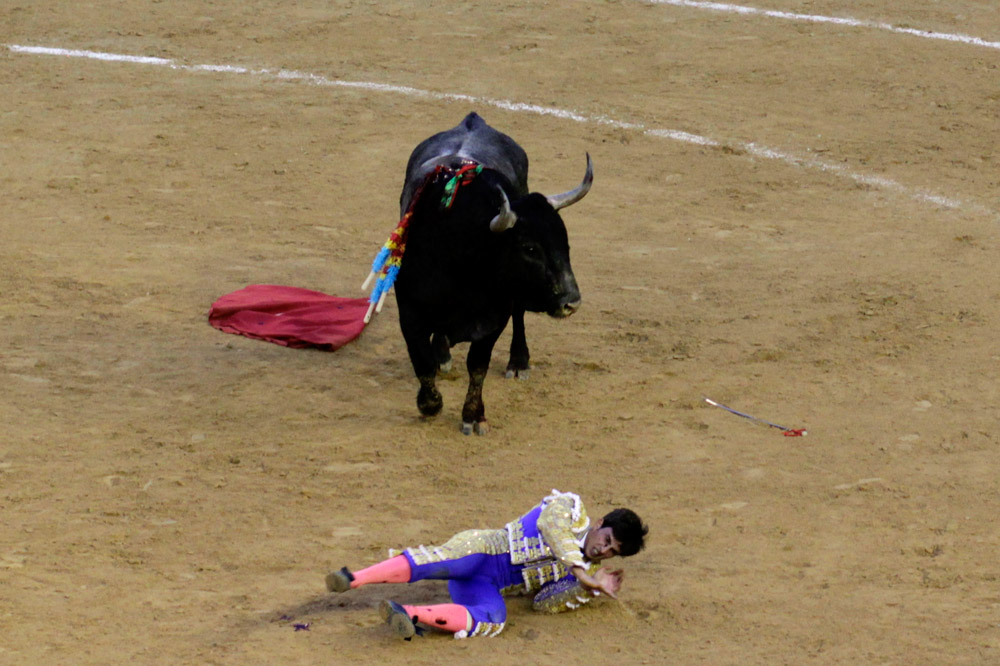
In true matador style, even bleeding profusely from his shin, he continued until the bull was finished. He received a standing ovation and then medical attention.
From Valencia, we headed to Granada …
